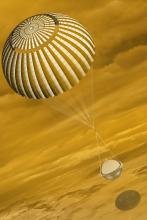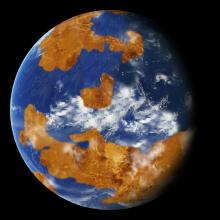Listen to today's episode of StarDate on the web the same day it airs in high-quality streaming audio without any extra ads or announcements. Choose a $8 one-month pass, or listen every day for a year for just $30.
You are here
Moon and Venus
Artemis Corona is the largest feature of its kind on the planet Venus. It’s a circular patch of rock that’s about 1300 miles wide. And it may still be growing — the result of activity far below the surface.
In fact, a recent study says Venus may still be an active world, with blobs of molten rock pushing up from deep inside the planet to change its surface.
Researchers created computer models to simulate the formation of coronae — round volcanic features found all across the planet. They compared the simulations to pictures of the surface. They found that 37 coronae match what the simulations say young features should look like. That suggests they formed recently, and are still being shaped today.
There’s little doubt that Venus was an active world in the past. Most of the rocks at its surface are volcanic. And it’s covered with volcanoes and similar features.
There’s been a debate about whether Venus is still active today. And the answer seems to be yes. Orbiting satellites have detected “hot spots” that could be erupting volcanoes. And images have revealed landscapes that must have been sculpted by recent activity. The new study adds to the evidence that the surface of Venus isn’t dead yet.
Right now, Venus is the brilliant “morning star.” Tomorrow, it’ll stand directly below the crescent Moon at first light. The star Spica and the planet Mercury will line up below them. More about this beautiful line-up tomorrow.
Script by Damond Benningfield






